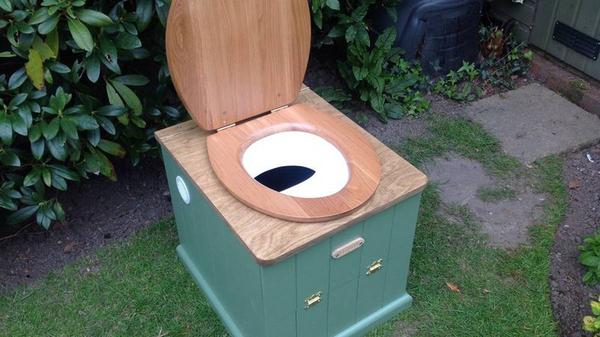Composting loos should be the answer to the world's toilet crisis
Most people don’t know how easy it is to compost human waste. All it takes is a container with a lid, a toilet seat, and a regular supply of natural dry materials. In short, you need the humble composting toilet – a much better solution to the global sanitation crisis than installing water-flush loos for the billions of without a toilet.
I started composting humanure, as human waste is often known, in Haiti after the 2010 earthquake. Our group of EcoSan practitioners – including Joe Jenkins, author of the Humanure Handbook – launched a pilot project in a large tent camp for displaced people in Cite Soleil to see if it was possible to provide clean composting toilets and to collect and compost all the toilet waste on-site.
At first it was hard to confront the foul existing toilet blocks in the camp without revulsion. As a newcomer to compost sanitation, the idea of working with toilet material in any capacity was daunting – what Joe calls faecophobia – but why should aid workers expect local people to live with such conditions if they won’t themselves?
The severe lack of water and toilets was a major concern for relief organisations in Haiti, which feared a looming public health disaster. (Their worst fears materialised when the first recorded cholera outbreak in Haiti hit in November 2010, killing more than 8,000 people.) Most sewage from the camps was collected by trucks and dumped untreated in lagoons at a waste site only metres from the sea, or anywhere out of sight. Even before the earthquake, Haiti had few proper toilets, and no waste treatment facilities in a country of 10 million people. In the dense city and slums, sanitation often means open defecation, the use of bags or chamber pots emptied into rubbish heaps or canals, or the construction of crude, shallow pit latrines – everywhere and anywhere.
We already knew that water provision alone couldn’t break the cycle of faecal-oral disease transmission because open defecation, poor hygiene, and poorly built latrines are the main sources of faecal contamination in the environment and water, and the real reasons why diarrhoeal diseases persist despite advances in water provision. The need to increase toilet coverage worldwide is now understood to be as crucial as water provision in improving public health and reducing poverty, yet there are still few affordable, off-the-shelf technologies appropriate for meeting the sanitation needs of the 2.5 billion people living without access to an affordable clean toilet.

But with training, anyone can build composting toilets, monitor compost piles, and manage their own sanitation needs. Humanure composting is simple and elegant; it doesn’t require a special toilet seat, or tubing to divert urine from the compost matrix. (High in nitrogen, urine is considered liquid gold for creating the ideal composting conditions.) All you need is a collection container, privacy, and a dusting of sawdust, leaves, or dried grass to keep the toilets odour and fly-free.
During humanure – or thermophilic – composting high temperatures and an array of biologic processes destroy the pathogens in human waste. With a proper storage time of 12 months, the resulting compost can be used to grow trees and food crops. It’s such a beautiful cycle that it’s a wonder there is a bias towards funding high-tech experiments, such as those currently championed by the Reinvent the Toilet Challenge. Many of those winning designs seem mechanically complex and wholly inappropriate in meeting the needs of the global poor.
It’s true that humanure toilets are not without their own problems. Even though many people started using them, and seemed to like doing so, many have been funded in emergency contexts without working with communities to establish a paying model that would guarantee their long-term sustainability. Humanure composting requires technical training, ample space for composting, adequate dry cover material, and people willing to collect and compost. But in terms of building the actual toilets and compost site, simple inexpensive materials are all that are needed. We have used shipping pallets, chicken wire, basic tools and rakes, recycled five and 15-gallon containers, standard toilet seats, and sugarcane bagasse and dried grass.
There can be no doubt that humanure composting deserves vigorous study and investment because it’s one of the best low-tech approaches to collecting and processing human and other organic wastes. It can help solve a myriad of problems by providing affordable toilets in water-scarce areas, and returning compost rich in beneficial microorganisms, as well as ample quantities of nitrogen, phosphorus, and potassium to depleted soils, reclaiming nutrients to make organic soil conditioners and fertilisers.
In our years of working in Haiti, we’ve shown that humanure composting is easily adaptable, and you don’t need to rely on custom-made or imported equipment. Over the last five years, we’ve trained more than 20 compost technicians and built over a dozen large compost sites for emergency settings, primary schools, NGO compounds, and housing projects — providing simple, clean composting toilets and on-site waste treatment for thousands of people. One project site in Haiti produced more than 15 tons of beautiful compost.
Alisa Keesey is director of the humanure composting and EcoSan training programme for GiveLove. Follow @GiveLoveOrg on Twitter.
Join our community of development professionals and humanitarians. Follow @GuardianGDP on Twitter, and have your say on issues around water in development using #H2Oideas.








